Students choice of selecting a university abroad depends heavily on the employability opportunities. Every year “The Times Higher Education” releases ranking list for universities around the world. The ranking is based on 13 performance indicators which measure the institution’s performance across teaching, research, knowledge transfer and international outlook.
The list is prepared after compiling answers of several recruiters, chief executives and business managers from top companies in 20 countries.
Let us have a look at the list “Top 10 Universities in Brazil for Higher Education for the year 2020”

The University of São Paulo is a large Brazilian public university, and is considered one of country’s more prestigious educational institutions.
Founded in 1934, the University of São Paulo came about through a collaboration of existing schools such as the Faculdade de Direito do Largo de São Francisco (Law), the Polytechnic School (Engineering) and the Escola Superior de Agricultura Luiz de Queiroz (Agriculture).
Now, the university has created new departments, and is one of the largest institutions of higher education in Latin America.
Four of its eleven campuses can be found in the city of São Paulo while the remaining campuses are in the cities of Bauru, Lorena, Piracicaba, Pirassununga, Ribeirão Preto and two in São Carlos.
The university has an remarkable 70 libraries installed across the various campuses for students to use and enjoy.
A significant proportion of scientific papers published by Brazilian researchers are produced at the University of São Paulo.
The university also houses five affiliated hospitals, 24 museums and galleries – with half a million visitors per year – two theatres, a cinema, and its own TV channel run by students.
However, the University of São Paulo have no accommodation within campus, or outside. The search for accommodation must be carried out by students in accordance to their economic conditions and interests.
Notable alumni include Antonio Candido de Mello e Souza, a Brazilian writer, professor, sociologist and literary critic, Brazilian lawyer and Vice President Michel Miguel Elias Temer Lulia, and Guido Mantega, Brazil’s former Finance Minister.
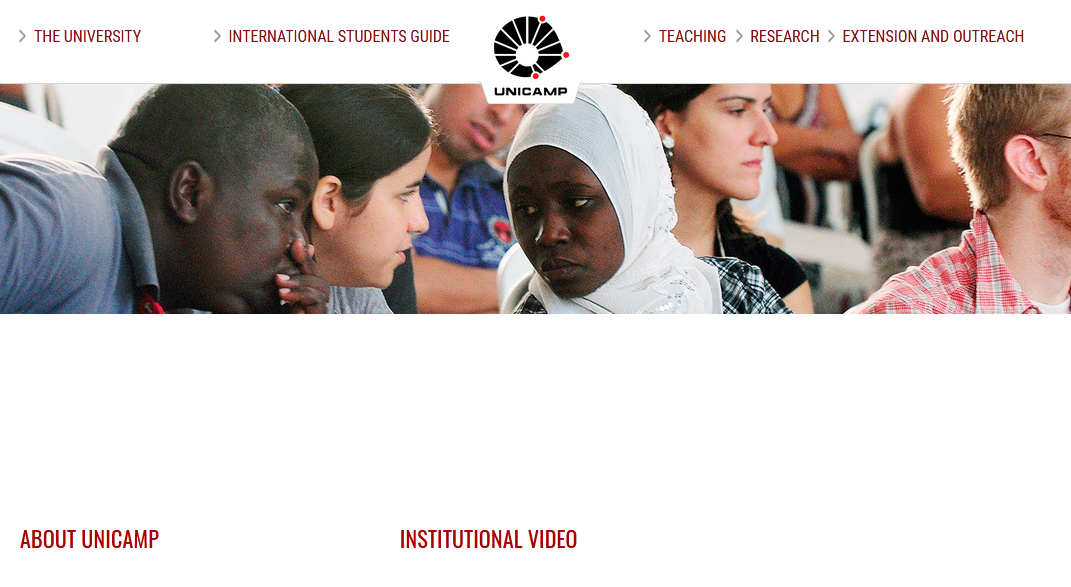
Campinas is a city in the Sao Paulo state region, and is home to the main campus of the State University of Campinas (UniCamp).
The multi-discipline university also has affiliate campuses in Brazilian cities such as Limeira and Paulínia. Campinas is known not only for its temperate climate at the Tropic of Capricorn but also its wide range of cultural centres such as dozens of cinemas and bars, known locally as “barzinhos”.
The university was opened in 1966, and although one of Brazil’s younger institutions has established itself as a primary medical and scientific research centre. As part of this research and development the university produces a high amount of patented material, outstripping other larger institutions and companies. A major breakthrough was achieved in 2003 when scientists from UniCamp licensed a patent for genetic death detection, and in more recent years scientists at UniCamp have developed a test for detection of the Zika virus.
Also in Campinas and maintaining a strong working relationship with UniCamp is the National Synchrotron Light Laboratory. This institute is a benefit to students studying physics and nanotechnology, and is home to the only particle accelerator in South America. Outside of the sciences, students at UniCamp may take undergraduate courses in arts such as Dance and Communication Studies, or in humanities such as Business Administration and Social Sciences.
International undergraduates will need to sit an exam before acceptance, which will require a strong understanding of the Portuguese language. Like all state run universities, both Brazilian and international students do not pay tuition fees. The most common airport for international students to fly into is the Guarulhos International Airport, located around 135km from the Campinas campus.
Alumni of UniCamp include actor Petrônio Gontijo, historian and gay rights activist Luiz Mott, and economist Paulo Renato Souza.
Federal University of Minas Gerais
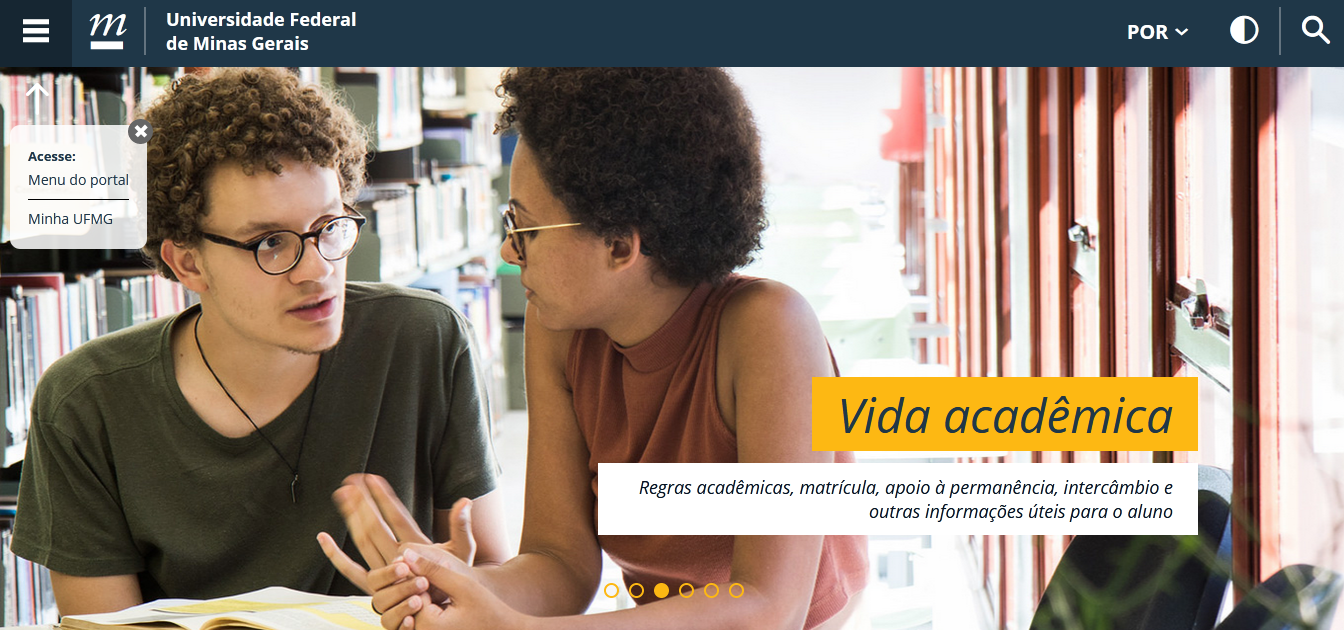
The Federal University of Minas Gerais (UFMG) is a public institution that is recognised as an outstanding centre of excellence in Brazil. Altogether, UFMG has 20 academic units, three special units, three administrative units, two hospitals and 25 libraries. The university offers 75 undergraduate courses, 78 graduate programmes and 68 continuing education programmes, in all fields of knowledge, with more than 40,000 students enrolled. Some 95 per cent of UFMG’s undergraduate courses have the maximum score on the IGC indicator (General Undergraduate Course Index – Brazilian Ministry of Education), and 68 per cent of UFMG graduate programmes at PhD level are classified as centres of excellence according to assessments made by the Brazilian Ministry of Education. As one of Brazil’s largest research universities, UFMG is committed to striking a balance between the high quality of its courses at both undergraduate and graduate level, the expanding impact of its research and the growing social relevance of its academic activities.
Federal University of Rio Grande do Sul

The Federal University of Rio Grande do Sul (Universidade Federal do Rio Grande do Sul or UFRGS) originated as the Escola de Farmácia e Química in 1895, which united with several other higher education institutions as the Universidade de Porto Alegre in 1934. It was granted its current name in 1947 and became a federal university in 1950.
It is one of the largest federal universities in Brazil, with over 27,000 undergraduate students, over 9,300 graduate students and more than 2,500 professors. Not only is it one of the largest, but also one of the best universities in Brazil with a number of prominent scientific publications.
UFRGS is almost completely located in Porto Alegre, with four campuses: Centro, Saúde, Olímpico and Vale), with a few off-campus buildings such as the Business School and the Institute of Arts, and some units in other cities. It is Rio Grande do Sul’s largest university, with more than 300 buildings accommodating 29 colleges, which are divided into 94 departments.
The University facilities include 500 laboratories, 33 libraries, 37 lecture halls, UFRGS Press, UFRGS Museum, Botanical Garden, a broadcasting centre, observatory, three campus accommodation buildings, five refectories, two summer camps and the Hospital de Clínicas de Porto Alegre, which is a prominent national hospital.
Notable alumni include many of Brazil’s most prominent politicians and civil servants, including former Brazilian presidents Getúlio Vargas and João Goulart. UFRGS has a profound political history; between 1964 and 1969, during the worst years of the military dictatorship, 33 professors were eliminated, as well as many students.
Universidade Federal de Santa Catarina
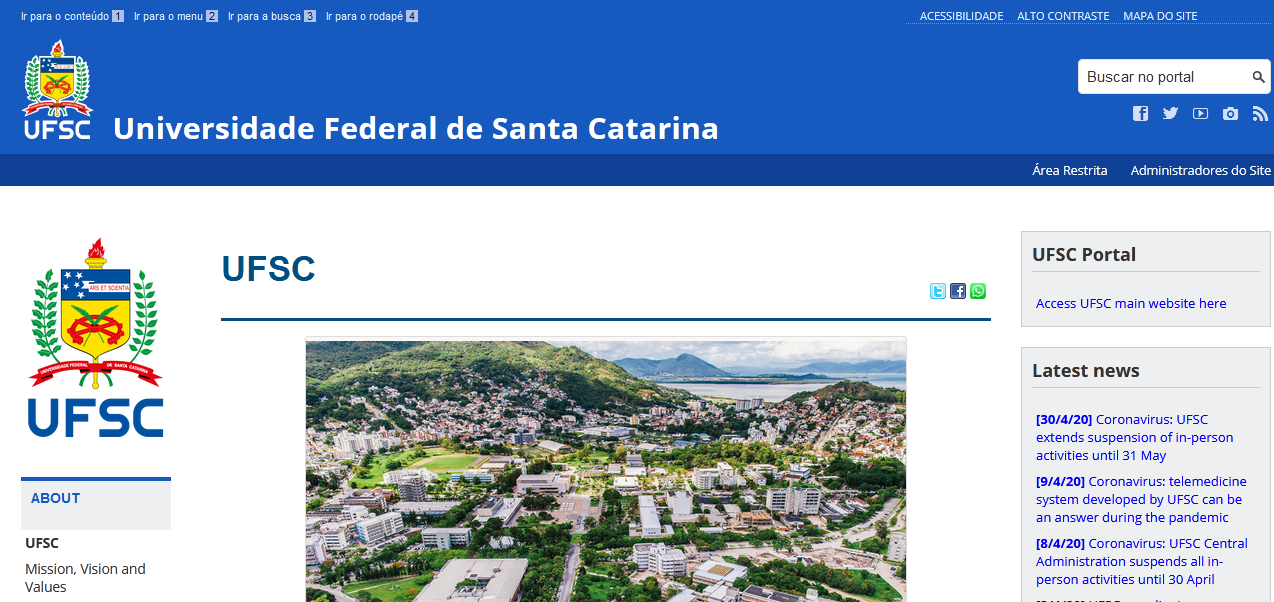
The Federal University of Santa Catarina (UFSC) was founded in 1962 as a unison of pre-existing colleges in Santa Catarina, a state in southern Brazil. The oldest of these is the Centre of Juridic Sciences which was opened in 1932.
There are now 11 campuses at UFSC, in Centres of Education from Health Sciences to Physics and Mathematics. The university is focused in the state capital, Florianópolis. This is an island city, with 42 beaches and an internationally reputed surfing location.
The city was named by Newsweek as one of its 10 most dynamic cities in the world. There are also campuses in the Brazilian cities of Araranguá, Curitibanos and Joinville, all in Santa Catarina.
The majority of courses offered at UFSC are in undergraduate degrees, though the university also has established research and doctoral facilities. The undergraduate courses requiring the highest entry grades are medicine, chemical engineering and mechanical engineering.
In its role as a premier research facility in Brazil UFSC is a part of EURAXESS, working with the European Commission to allow doctoral students to study overseas. Those participating in study abroad and exchange programmes at UFSC can find administrative and academic assistance at the university’s International Office.
UFSC offers Portuguese as a foreign language teaching to all international students, with a separate admissions process for Brazilian indigenous students.
Brazilian universities pride themselves on their work with the community around them. One aspect of UFSC’s outreach is known as SPEX week, when the university’s demonstrates to local residents the work being done in Teaching, Research and Education.
Esteemed persons to graduate from UFSC are civil engineer Daniella Abru and lawyer Clèmerson Merlin Clève.
Federal University of São Paulo (UNIFESP)

The Federal University of São Paulo, known in Portuguese as the Universidade Federal De São Paulo or UNIFESP, is a public university in Brazil.
From its foundation until 2005, UNIFESP was a health science specialist university. Its mission was to develop students into health professionals and contribute to medical research.
The original core of the university was the Paulista School of Medicine, dating back to 1933. In 1994 the school was transformed from a private institution into a federal one.
The university headquarters are located in Vila Clementino, São Paulo. Over the decades the university has grown significantly, accumulating hundreds of buildings around the Vila Clementino area. They include the São Paulo Hospital, the largest hospital in Brazil. Graduate students gain work experience in this busy, comprehensive medical institution. The hospital also provides health services for underprivileged people.
In 2005 the university expanded to outside of São Paulo, establishing campuses in Santos, Diadema, Guarulhos, São José dos Campos and Osasco. Several of these campuses offer courses in academic fields beyond UNIFESP’s traditional medical background, such as philosophy, history and economics.
Over 50 courses are available to study at UNIFESP.
São Paulo is one of the most populous cities on the planet. Its 11 million residents work hard and play hard, with 24-hour bars and the most productive economy in Brazil. As the capital of São Paulo state, the city is one hour’s drive from the Paulista Coast, with its stunning beaches and abundant seafood.
Pontifical Catholic University of Rio de Janeiro (PUC-Rio)
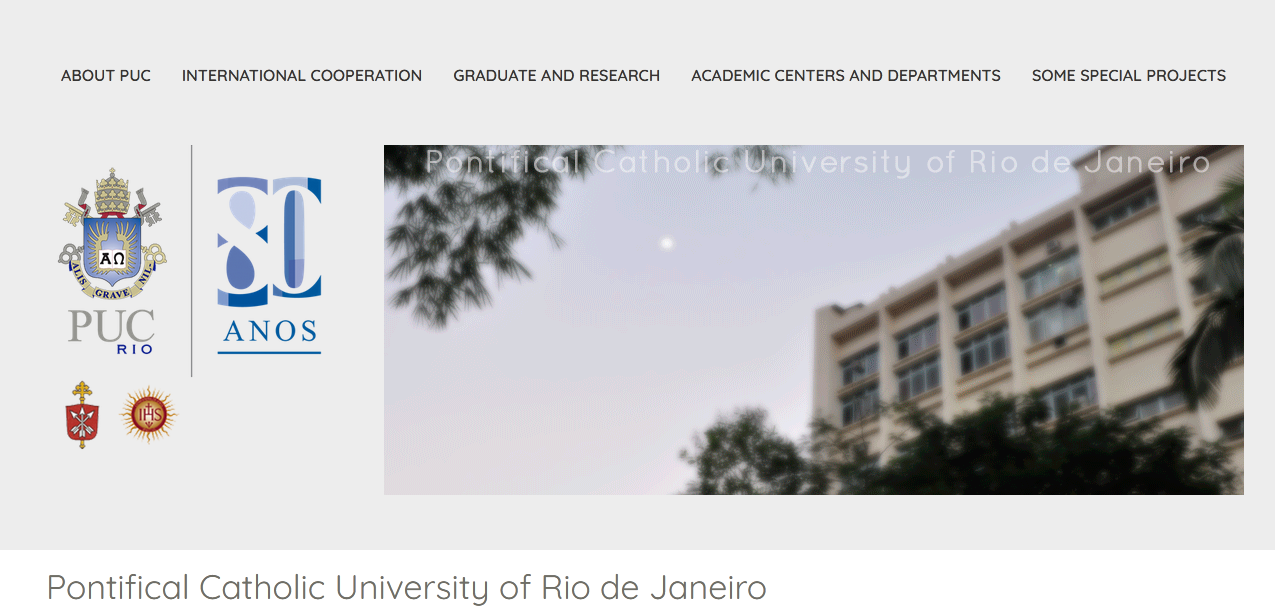
Pontifical Catholic University of Rio de Janeiro (PUC-Rio) is a private non-profit Catholic university created in 1941. PUC-Rio is a research institution that focuses primarily on the development of science and innovation. PUC-Rio has about 1,500 faculty members and researchers, and 26 departments organised in four academic centres: Theology and Human Sciences; Social Sciences; Science and Technology; and Biomedical Sciences. PUC-Rio offers 36 bachelor’s programmes and 26 graduate research programmes. The International Program Office makes possible the exchange of students, professors and researchers. PUC-Rio offers programmes for undergraduate and graduate international students: exchange and short-term programmes and double degree programmes, among others. PUC-Rio is located in Gávea, a charming and green neighborhood of Rio de Janeiro. Its campus includes computer centres and free internet access; libraries; restaurants; a bookstore; and cultural and community service projects.
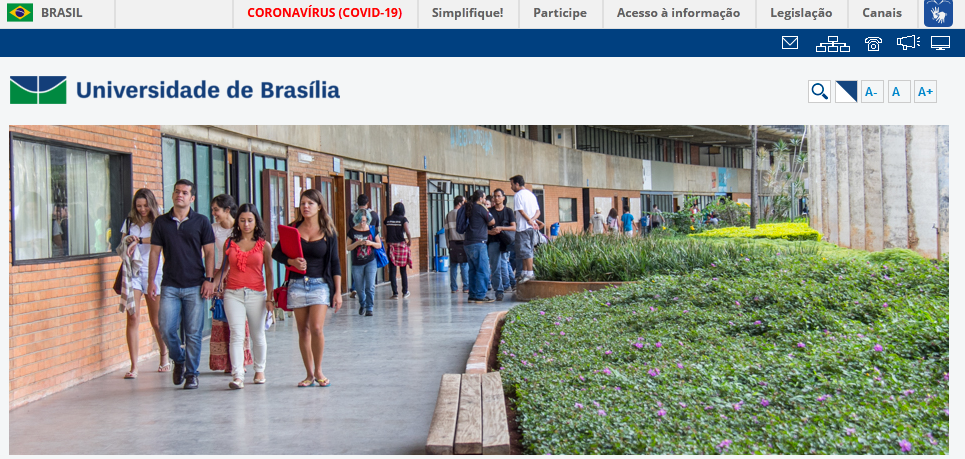
Created under the utopian vision of educator Anísio Teixeira and anthropology professor Darcy Ribeiro in 1962, the University of Brasília (UnB) is located in the centre of Brazil’s capital city, on the banks of the Paranoá Lake.
There are four campuses: the Darcy Ribeiro campus (regarded as the UnB’s nucleus), the Ceilândia, Gama and Planaltina campuses. Oscar Niemeyer, one of Modernism’s most feted architects, designed UnB’s main building, the Central Institute of Sciences and was also a key player in the university’s founding.
Its strengths lie in its economics, international affairs and political science courses but its general teaching, research and outreach programs have become one of Brazil’s most well respected universities. Comprising 26 faculties and schools, with 18 specialised research centres, there are over 105 undergraduate programs, some of which are evening or distance learning-based. It also offers 147 graduate degree programs and 22 specialist programs.
Its facilities are significant: the Central Library is home to midwestern Brazil’s largest archive and is used by research and federal employees from all over the country.
UnB also boasts a University Hospital, a veterinary hospital, a restaurant and the Fazenda Água Limpa, a clean water farm just outside Brasilía; where forestry, agricultural and ecological research is undertaken on the university’s behalf.
Relying on exchange programmes and networking with international organisations and post-secondary institutions, UnB administration and the Advisory Committee for International Affairs are positing it to the world as one of the best universities in Brazil.
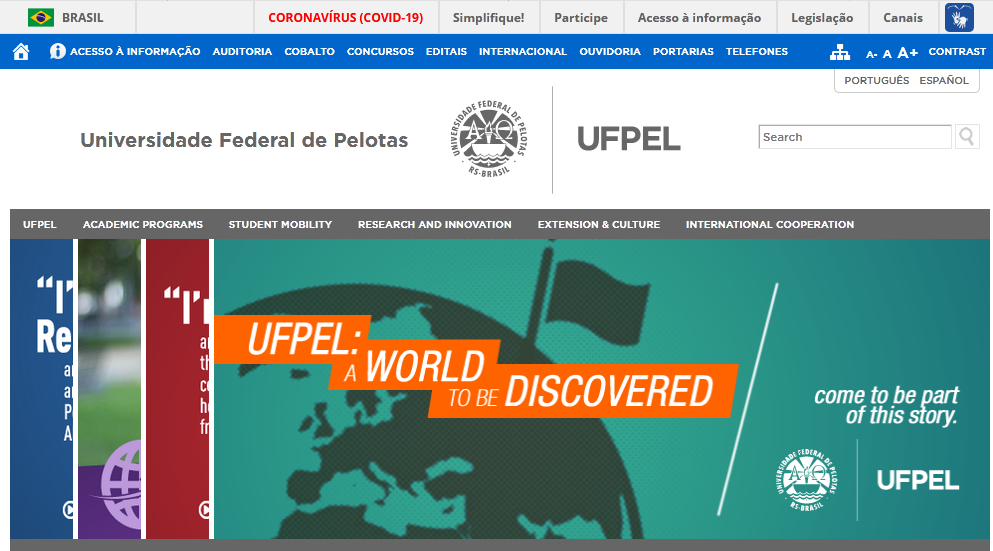
Set up in 1969, Federal University of Pelotas (UFPEL) is based in the small city of Pelotas (population: 250,000-499,999), in the southern state of Rio Grande do Sul, Brazil. UFPEL is spread over four campuses: Ciências Sociais, Capão do Leão, Ciências da Saúde and Porto, which includes 22 colleges and schools. Many of its buildings are registered as having architectural and historical value and include many esteemed artworks and sculptures.
There is also a library and sports facilities, as well as study abroad and exchange programs, maintained by UFPEL’s 75 agreements with higher education establishments across 25 different countries.
Students can choose from 99 undergraduate programs, 39 master’s courses and 16 doctoral programs at its 20 academic units, which include a Higher School of Physical Education and a Conservatory of Music.
UFPEL offers the option of distance learning through a federal government initiative called Universidade Aberta do Brazil (Brazil Open University) and also grants many scientific and technological research scholarships and awards for young talent. In 2013, the Coordination for Technological Innovation registered 15 new patent applications.
A recognised leader in terms of its extension programs, UFPEL facilitates interaction and work between professors, students and technical administrative staff members with the community beyond the university campus. Partnerships with community associations, schools, public institutions, NGOs and businesses span a range of fields and disciplines. Through this political, economic and cultural cooperation, UFPEL plays a key role in developing the communities of Rio Grande do Sul and southern Brazil.
Federal University of Rio de Janeiro
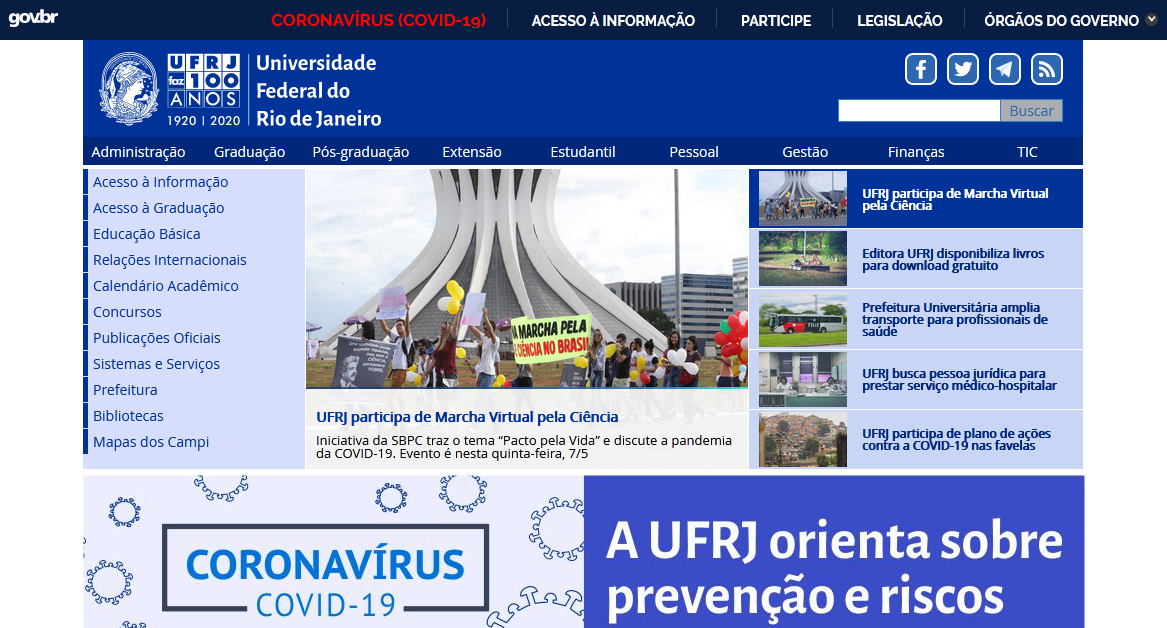
The Federal University of Rio de Janeiro, sometimes known as the “University of Brazil” and commonly abbreviated to UFRJ, is one of the largest and best known universities in Brazil. Founded by the Brazilian State in 1792, the university has gone on to have an enormous influence on public life in Rio, being responsible for laboratories, libraries and hospitals.
The University operates across a number of campuses and facilities throughout Rio de Janeiro, but is primarily focused on Ilha do Fundão, an artificial island off the western shore of Rio’s famous Guanabara Bay. This campus, known as College City, offers a huge range of services and activities for students including a free shuttle bus services for crossing Rio de Janeiro, various restaurants and cafes, a sports centre, as well as accommodation for students.
UFRJ can also lay claim to a number of high-quality academic facilities, such as the largest ocean tank in the world, as well as a domestically operated maglev train system.
As one might expect for a higher education institution of this size and reach, UFRJ offers a huge range and variety of undergraduate courses (more than 170), as well and numerous avenues for postgraduate and research students. UFRJ also distinguishes itself with a significant level of international co-operation, with extensive opportunities for foreign students to come and study in Rio.
The university can also boast of having produced a succession of successful alumni, including writer Jorge Amado, Nobel Peace Prize nominee Osvaldo Aranha, and physician Oswaldo Cruz.
Follow us on Facebook, Twitter, Linkedin.








.png)